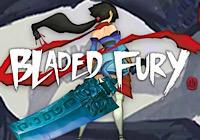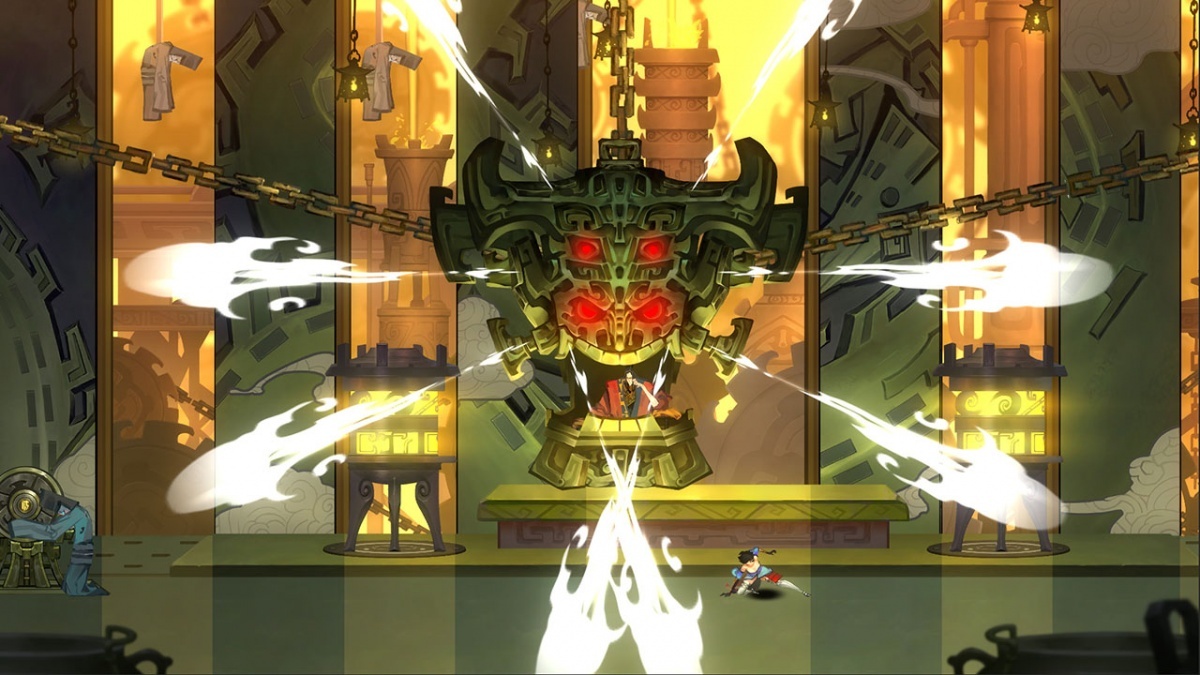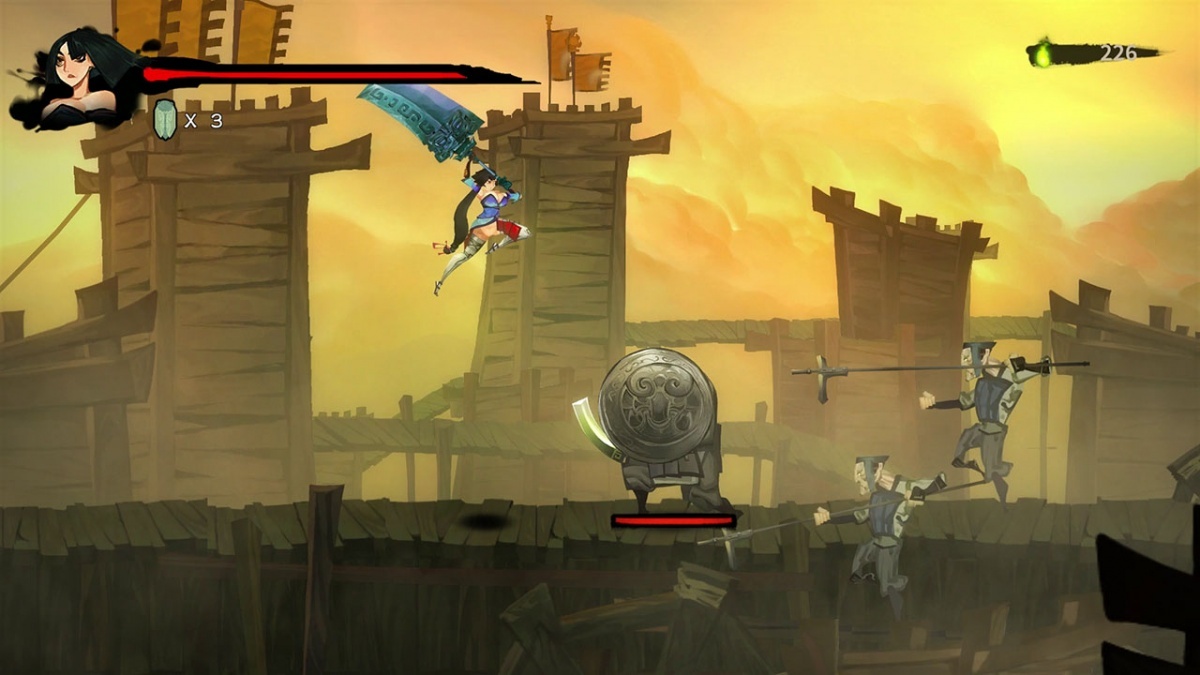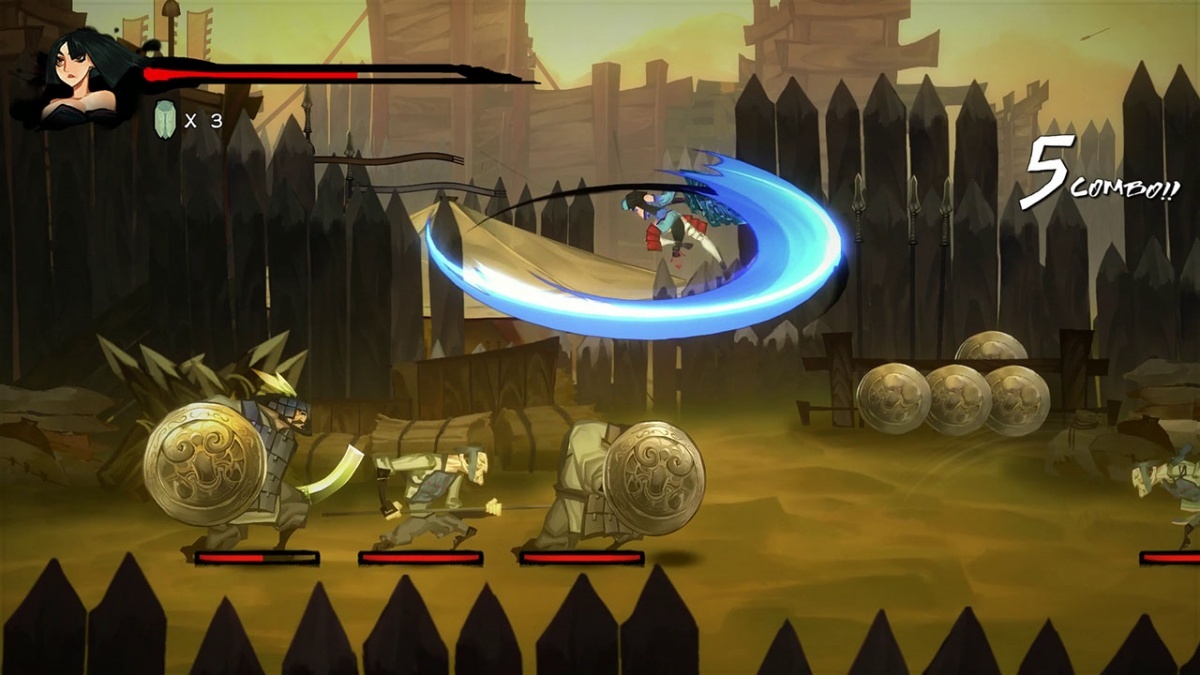Bladed Fury (Nintendo Switch) Review
By Albert Lichi  25.03.2021
25.03.2021

Vanillaware's Muramasa: The Demon Blade is often remembered as a high watermark for beautiful 2D action. It used painterly, illustrative visuals and emphasised Japanese samurai and ninja mythology. While some might feel it was a solid action game that was spread a bit too thin for its own good, nobody could deny the impression it left on players. China is no stranger to taking other people's ideas and trying to do their own spin on it. With Bladed Fury, NExT Studio aims to take Muramasa's foundation and build upon it a Chinese mythological fantasy epic. NExT Studio has an opportunity to hone and refine what Vanillaware established and potentially deliver on its promise. Read on to find out if they succeed with Bladed Fury.
Bladed Fury begins strongly by establishing its premise early on as a straightforward revenge plot. The protagonist is fallen Princess Ji, who has been framed for the murder of the anointed Duke of the Qi region. On the run and desperate to redeem her name, she will enlist the help of different spirits and deities to endow her with powers to fight the forces of Tian and to clear her name. This is the simple version of the story; the plot of Bladed Fury is dense with historical intricacies and many prominent figures that tie into what should be a simple story.

The through-line that drives the action is that Ji has to find the witnesses of the murder of her father to clear her name, and the large cast of extraneous characters muddles what should have been a simple story. Bladed Fury is about a specific period in China when many of the states were at each other's throats, and many of the characters and events in this story assume that the player has a basic understanding of this history. This is perhaps because it's a title not made for the average Westerner and is from a Chinese developer who might not be aware of the fact that most people don't know Tian the usurper or what the Zhou dynasty was. Much of Bladed Fury's dialogue can feel a bit bewildering at times with how it throws around plot-related concepts. There are no characters to ask questions about anything because the assumption is that everyone knows what the stakes are, except for the typical Western player.
What Bladed Fury needs is a fish-out-of-water character to ask the questions and for the player to learn from. This would help draw gamers into the scenario and learn with the character as the events happen. The average Chinese gamer won't question anything in this story because it is something that has been ingrained in their culture the same way most Western gamers understand the basics of Greek mythology.
While it may be difficult to get invested in the goings on of the Qi kingdom, Bladed Fury's action is fortunately very stimulating. Anyone who was already accustomed to the way Muramasa plays will be in luck because there is some overlap between both titles' mechanics. Princess Ji has a few combos and can follow through with upward strikes to launch threats, as well as being able to transition to quick and violent downward attacks. She also has a gigantic great sword for heavy but slow attacks which is primarily used to chip away at spirit barriers from otherworldly enemies - destroy their shields and they will be exposed to her basic combos. It is a simple yet effective system that feels good thanks to the visceral and crunchy feedback courtesy of the audio design.

Ji is also very mobile. She is equipped with the appropriate amount of invincibility frames when dashing and can even maintain frantic mobility in the air. The parry system is a classic risk and reward mechanic that allows confident players to pull off parries for big damage. Encounters in Bladed Fury tend to rely on the screen being filled with all kinds of heavies, spirits and soldiers of many types. These bullies are kited to ensure Ji is facing the right direction when parrying becomes a big part of any battle strategy. This is where the soul sliver mechanic can be helpful, since it involves summoning a previously defeated boss to do massive area of attack damage.
Summoning some of these big guys costs a charge which also comes with a cool-down. Ji is only able to equip four at a time out of about a dozen and she can only switch them out at save points. It is a simple but effective system that allows a modicum of player expression, but ultimately it is down to how one wishes to wipe out a swath of obnoxious archers. The weakest aspect is the lazily designed upgrade system that for some reason locks out very basic moves like the parrying. It is a very short list of upgrades with most of them being attack power upgrades or abilities that should be usable from the start. The only logical upgrade on the list is the one that increases the amount of health potions Ji can carry. She can only upgrade this twice, though.

The action will certain carry most of the experience along with the art direction. Obviously, Bladed Fury is inspired by titles developed by Vanillaware and at times the former is shockingly close to emulating George Kamitani's style. Certain design flourishes are lifted straight from Muramasa, like how the bones of spirits glow and how certain desirable female characteristics are emphasised for maximum appeal. The lush and thick illustrative art style with layers upon layers of background elements create a palpable illusion of depth. Character animations, however, are nowhere near as sophisticated as the craftsmanship seen in the games that inspired Bladed Fury. Ji's character rig has fewer moving parts and the illusion is not as convincing nor does it have the same level of care or nuance. The developers still should be commended for coming so close.
Bladed Fury is not a deep experience; often, it can be rather shallow. At best, it offers some action comfort food that is brief and does not overstay its welcome the way Muramasa did with its 40-hour runtime. It may lack a lot of the heart of a real Vanillaware title, but thankfully Bladed Fury concludes within a reasonable timeframe, even if it lacks substantial replay value and the story fails to impress. Princess Ji is not an interesting character and many of the supporting cast have very minor roles in the events that transpire. On the Nintendo Switch, Bladed Fury has a rough frame rate that can make the action get a tad choppy when the screen is dense with enemies. Having so many elements to contend with is just too much for the console to handle and load times do feel a bit longer than what would be reasonable.

Cubed3 Rating
Very Good - Bronze Award

This competent knock-off won't stick around in anyone's memory after playing it, but Bladed Fury has a strong foundation and the action feels satisfying to play. However, the droll story is a hard sell for anyone not familiar with Chinese history. The art, though, is very good - almost as good as the Vanillaware titles that inspired it. From a certain angle, it might pass as the real thing.
Comments
Comments are currently disabled

 Sign In
Sign In Game Details
Game Details
 Out now
Out now  Out now
Out now  Out now
Out now  Out now
Out now  Subscribe to this topic
Subscribe to this topic Features
Features





 Top
Top

